- Overgrown tree roots, oil spills, and the elements can cause cracks in your asphalt.
- Planning to fix driveway cracks yourself? You can do it using different products.
- You can also hire a contractor to fix wider cracks or extensive alligator cracking.
Whether you are a homeowner or a property manager in charge of running an airport or storage facility parking lot, keeping your asphalt driveway or parking lot in good shape is a worthwhile investment. Asphalt is much like our skin - it ages and matures as time passes. Asphalt also requires care and attention, in order to maintain its fresh appearance and life span. Read on to learn tips and best practices on how to care for your blacktop.
Table of Contents
Primary Causes of Asphalt Deterioration
When you see cracked asphalt, you know for certain that that problem needs to get fixed ASAP. Otherwise, it will only lead to bigger problems and would cost more to repair.
These are the main elements that cause damage to your asphalt:
1. Moisture
Water is a major factor that speeds up asphalt deterioration. When water seeps into asphalt pavement, it slowly erodes the foundation. A weakened foundation creates depressions, leaving an uneven surface that ultimately become cracks and potholes.
If your parking lot or driveway appears to be constantly damp or have small puddles that don’t dry up completely, this means that you need to check for drainage failures. Allowing moisture to remain on the surface of your blacktop makes it appear unclean, soppy, and can cause accidents.
A wet parking lot or driveway can cause anybody walking on it to slip and fall. It can also cause vehicles to skid, resulting in collisions. Paying for property damages and medication due to physical injuries can cost a lot!
Ensuring that any form of precipitation is drained from your asphalt surface is one step to prolonging its good condition, while avoiding accidents. Check to make sure that runoffs from sprinklers or hoses and puddles caused by rain get drained properly.
FREE COURSE!
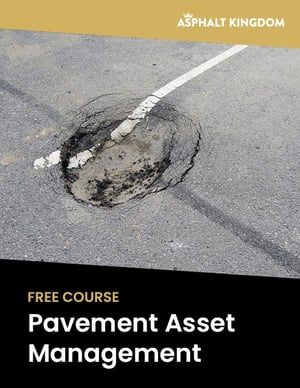
How to prepare and professionally maintain your asphalt
2. UV Exposure
Constant exposure to the sun is another factor that contributes to further deterioration of cracked asphalt. The sun dries out oil, tar and bitumen - the main components of asphalt - and leaves the surface in a fragile state.
When the ground moves, asphalt echoes this by flexing, to prevent the surface from cracking or breaking. However, because continuous exposure to the sun burns out the ingredients that allow asphalt to flex, it becomes brittle and eventually split. Cracks that don’t get filled soon enough grow larger and become potholes.
3. Vegetation
Cracked asphalt means that your blacktop has weakened. Because of this, you will soon notice vegetation growing through the cracks. This means that water has seeped through and got trapped under your asphalt, prompting weeds to grow. Since weeds grow and spread fast, this can lead to more cracks and further damage. Pulling the weeds out and filling cracks before they get could worse is the best way to prevent having to spend more on large-scale repairs.
4. Oil and Chemical Spills
Oil and other chemical spills from your vehicles can also help corrode the surface of your asphalt if not cleaned up quickly. This will create ugly discolored patches, making your parking lot or driveway look dirty. Dried spills become stains and can be very difficult to remove. In addition, chemical spills that are not cleaned soon enough can also penetrate asphalt, and weaken its foundation.
Use an eco-friendly and biodegradable degreaser cleaner to clean up oil and chemical spills before they dry up completely. For more tips and suggestions in cleaning oil and chemical spills, be sure to check our additional guides here and here.
Salt and deicers are generally useful during the winter months, but since they are chemicals or are made up of chemical compounds, they have a negative impact on the surface of your asphalt. These chemicals can cause corrosion and speed up oxidation (the graying or fading of the deep black color of asphalt). Giving your parking lot or driveway a good power-washing, especially during spring cleaning, can help wash off residue left by these compounds.
Why Should You Repair Asphalt Cracks?
Repairing Cracked Asphalt
Thoroughly cleaning your asphalt surfaces and following the suggestions above can help prevent further damage. However, if there are visible cracks, you will need to fill them properly as soon as possible.
Here are highly effective methods to fill cracks with asphalt crack filler depending on the size and depth.
1. Cold Pour Crack Fill
This method is ideal for small and shallow cracks that are less than ½-inch wide, and is generally used by homeowners in residential areas. A cold-pour crack filler is made using acrylic and water-based products, and is available in liquid form. It can be poured or applied into the crack directly by hand.
2. Hot Pour Crack Fill
Usually applicable to large-scale jobs, such as in parking lots, roads, race tracks, and runways, this method requires a hot pour melter applicator. The rubber-based hot pour crack filler is shaped like a cube that you put into the 2-in-1 melter applicator.
Once melted, you can apply it onto the cracks by pushing the machine over them, much like a lawn mower or shopping cart. Hot pour crack fill is preferred by professional contractors, even when working on residential areas, since it lasts longer than a cold pour crack fill. (Cold pour crack filler can only last up to 6 months, while a hot pour crack fill can last for 2-3 years.)
3. Gator Patch
How To Use Gator Patch
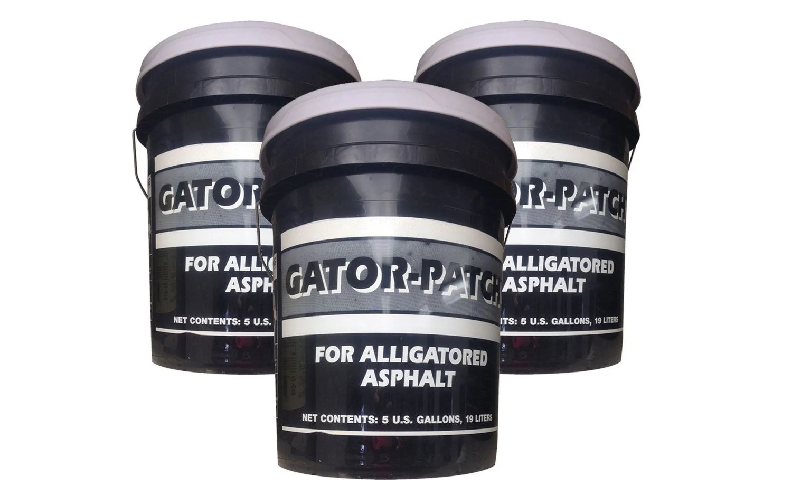 This option is highly recommended for a large network of interconnected cracks that appear like the back of an alligator, hence the name. The Gator Patch is a substance that looks like clay or mud. You need to use a trowel to scoop the material out of the container, and apply onto the asphalt pavement to cover a wide section of cracks.
This option is highly recommended for a large network of interconnected cracks that appear like the back of an alligator, hence the name. The Gator Patch is a substance that looks like clay or mud. You need to use a trowel to scoop the material out of the container, and apply onto the asphalt pavement to cover a wide section of cracks.
Shop the Asphalt Kingdom Crack Filler Store
Conclusion
Keeping your asphalt surface clean and well-maintained not only keeps you from spending a fortune on repairs, but it also speaks volumes of how much you care for your home or business. Call our experts at 1-866-399-5562 to learn more about how to tackle your specific crack repair project!


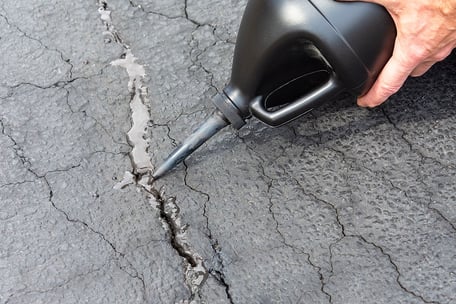
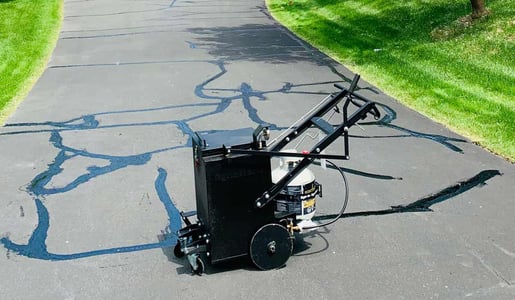




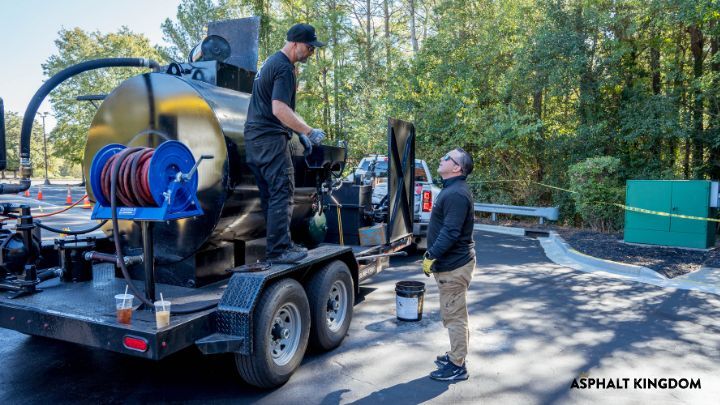
-2.jpg)
-1.jpg)